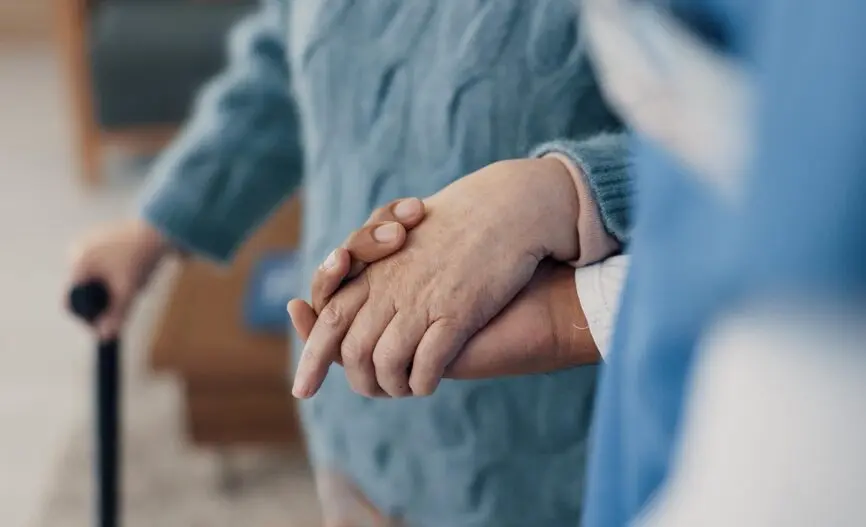Bioethics Forum Essay
After the Election, Our Aging Society Will Still Need Care Policy
Stepping into the role of caregiver to an older adult is a full-immersion course in health policy and how it is about to crash into your life. It is nearly impossible to prepare for this experience because you have no timetable for when you will get the call to report for duty. A fall. A stroke. A problem with the monthly bills suggesting cognitive impairment. Deterioration of reflexes or eyesight that end decades of driving, and the freedom associated with driving. Difficulty climbing stairs or lifting shopping bags. The diagnosis of an age-associated condition. There are so many ways in which living independently in later life can switch, abruptly or gradually, to a need for someone else to provide, manage, or finance the care that one now needs.
That someone else is usually a family member. The family caregiver who shows up in these scenarios will soon find out what they didn’t know about Medicare, namely, how little “care” it covers. Research from AARP estimates that in 2021 the total number of family caregivers in the U.S.—38 million, roughly equivalent to the population of Canada – provided $600 billion in unpaid care to the Medicare population, while Medicare itself covered $829 billion. During discharge planning from a Medicare-reimbursed stay in a hospital or rehabilitation facility, a family caregiver may be told that their parent, partner, or other relative will need “help” or “services” to return home safely. This handoff from paid team to unpaid worker is not framed as informed decision-making. The family caregiver may have no idea of the burdens that have just been transferred to them.
This aspect of our aging society has surfaced during the 2024 election season. In October, the Harris campaign announced a proposal to expand Medicare coverage of home care. KFF analysis of this proposal includes a stunning chart that shows the gap between the median annual income of a Medicare beneficiary ($38,000) and the annual costs of long-term care services: $68,640 for a home health aide at 40 hours a week; $288,288 for 24/7 home care. These are not real options for most older Americans. Homeowners may be able to convert their largest source of wealth – their home – into money to pay for care, but they need a home to receive home care. “Spend-down” provisions that enable Medicare beneficiaries to qualify for state-level Medicaid home or residential care put pressure on public programs that already provide coverage and services to other populations, such as children and people with disabilities.
KFF notes that expanding Medicare coverage of home care would require Congressional action. AARP survey data from 2023 show overwhelming bipartisan support for care policy that would ease family caregivers’ burdens, such as expanded Medicare coverage, tax credits, and paid leave. In our polarized society, this is one of the issues that unite us. If you are a family caregiver, you know that you have something significant in common with other family caregivers. You have shared experience of what is meaningful about caring for elders. And you share experience of the financial and time pressures, the red tape, the difficulty in finding services you can afford, the fear of missing some step, deadline, or form – the “structural burden” that makes caregiving in America so hard.
After the election, the care needs of our aging society will continue to be met by families showing up, day after day. Whether or not our public officials decide to imagine otherwise and commit themselves to policy changes that could prove highly popular, bioethics needs to keep its eyes on the caregivers. Our field tends to see caregivers when they are making medical decisions as surrogates for patients. However, when our professional gaze stays focused on the clinic, we miss where most care provided by families will happen.
At minimum, we should improve informed decision-making during inherently unequal handoffs from hospital to community by sharing the information we know that family caregivers will need. Discharge planning should be recognized as an activity in which policies, processes, and practices should attend to the needs and concerns of caregivers as well as patients. One way to do this is to provide family caregivers with information about resources that anticipate their future needs and concerns. The website of the national Family Caregiver Alliance is a useful resource for all caregivers. The federally funded State Health Insurance Assistance Program (SHIP) is an additional resource for caregivers of patients insured by Medicare, as well as for Medicare recipients, providing state-level advice and guidance.
Bioethics is experienced at spotting and responding to problems of informed decision-making. If we can picture family caregivers walking toward the edge of a financing cliff, we can recognize a professional duty to tell them the truth about where they are going.
Nancy Berlinger, PhD, is a senior research scholar at The Hastings Center, where she oversees the Bioethics for Aging Societies research portfolio, including The Hastings Center Guidelines for treatment decision-making and care near the end of life. Alison Reiheld, PhD, Professor of Philosophy at Southern Illinois State University, contributed to this post through discussions with the author.













